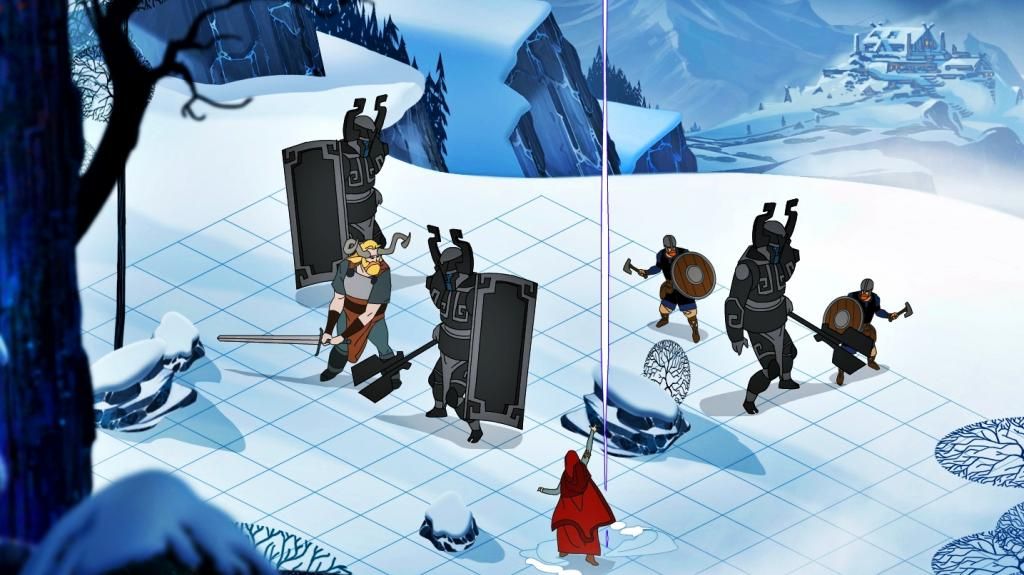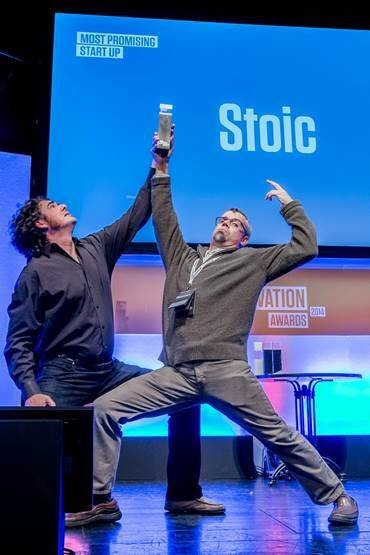The name is extremely confusing, and probably makes you think it’s associated with Candy Crush (or so King would have you believe), but the non-idiotic amongst you will know that it is not. The Banner Saga is, in Stoic’s own words, “an epic role-playing game inspired by Viking legend”. It released to a huge wave of good press on PC, and it’s now significantly easier to carry a version around with you thanks to the iOS and Android releases. Break Stoic down into its component parts, and you will find ex-Bioware devs Arnie Jorgensen and John Watson. John was kind enough to answer our questions through the magic of the internet and so, without further ado or adon’t, we present to you the fruits of this 21st Century communication.
Although Star Wars: The Old Republic is obviously a very different game, how did your work on that title benefit the development of your first Stoic project?
John: Working on SWTOR was a 6 year process and an incredible learning experience. It was different in the sense of scope. SWTOR was a 600 person team working together on a multi-hundred million dollar project and TBS was a 3 person studio with up to 12 external people working on a 1 million dollar project. During the years on SWTOR I really matured as a programmer and a technical leader. Taking on an ambitious project like TBS without those years of experience under my belt would have been incredibly difficult, if not impossible. I’m talking about experience programming of course, but also experience with content building, branching storylines, and project management.
How and why did you decide to make The Banner Saga in its finished form?
John: Many things went into the final form of TBS. We actually ended up with a finished game very similar to what we had originally envisioned. The story changed quite a bit, and many things got cut or changed, but the game ended up better off because of it. When making a large project with limited resources, it is very important to constantly monitor your progress, estimate your finish date, and make any game changes and cuts necessary to complete the thing. That’s the constant exercise of negation, subtraction, and simplification. On the other hand, you have to remain ever vigilant for opportunities for enhancement, addition, and polish. Sometimes, some unexpected opportunity arises, and you need to be able to exploit it if possible. I refer to these situations as ‘low hanging fruit’. To exploit these opportunities requires communication between all team members. As a programmer I might create a system and identify several ways it can be enhanced or varied with almost no work or risk. As a team we can decide how and when to take advantage of these situations.
Austin Wintory is an immensely talented composer, but what was it about him and/or his work that made you decide he was the best fit for your new game?
John: We were approached by dozens of talented and qualified composers. We had a very hard time evaluating them all. One day we sat down and listened to demo reels for an entire day and narrowed it down to 3 composers. We went away for the day and asked each other “If you could choose any composer, with no limitations, who would it be?”. We had all just recently played Journey and were amazed by the way the music was so integral to the game experience, and impressed with the way the music adapted to your gameplay so adroitly. So we gave Austin a call, Austin checked out the game and got excited about it, and the rest is history.

The game was originally funded via a wildly successful Kickstarter campaign; but since then, there’s been an ever-growing cynicism surrounding crowdfunding amongst the target audience. How (if at all) does this influence your current or potential plans for funding future projects?
John: Kickstarter projects for games can be an exciting and effective way to get games made that would not be made otherwise. Our friends over at Skyshine recently Kickstarted their game, BEDLAM, which is based on The Banner Saga engine and technology. Kickstarter backers should be aware that anyone can have a great idea, but not everyone can execute it. You really need to evaluate the team and whether they are proposing a project that they can actually finish. This is a difficult proposition for people who don’t have intimate knowledge of the practices of game development.
Perhaps a system of recommendations might help, where respected developers can recommend or vouch for each other on Kickstarter, or a reputation system allowing a Kickstarter team to demonstrate that they are not going to flake out. Actually reaching the finish line is the hardest part of many projects. 80% of the work is spent on the last 20% of the features and polish, and all that.
The Banner Saga originally released on PC, is now available for a variety of mobile devices, and is soon coming to consoles. How do you meet the challenge of releasing the same game on very different formats with very different control inputs?
John: We had planned from the beginning to be compatible with tablets, and in fact our early prototypes all ran on the original iPad in addition to PC and Mac. We put tablets on the back burner during development because of hardware resource limitations — the iPad 1 simply has insufficient memory and other resources to effectively run the game.
Throughout development, though, we carefully designed every user interface to be operable by a finger instead of a mouse. We made all of our artwork at retina resolution and beyond. When we launched the game on PC and Mac, tablet technology had caught up with us, and we were able to run the game very well on the modern devices. We utilized technologies which allowed us to write most of the game code in a platform-independent way. Once we started the mobile porting process, I had the game running on my iPad Air within 2 days. However, it still took 4 months or more to polish, adapt, and ‘productize’ the game for iOS, and several more beyond that for Android.
Why did the Android version arrive after the iOS version? Did you take any lessons from the first release that informed the second?
John: Much of the work in porting to iOS was not iOS-specific. Many of the optimizations and polish features such as tilting and pinch zooming are applicable to all touch devices. So the majority of that work went directly into the Android port and in fact was a prerequisite for doing so. Android took longer to finish because of the massive number of devices available for Android. Developing and testing for Android was dramatically more difficult and time consuming than for iOS. We are also in 2 different Android stores (Google Play, and Amazon App Store), both of which require different code, builds, achievement systems, and cloud saving systems. In some sense, porting to Android for us was really 2 ports: Porting to Google Play, and Porting to Amazon App Store. Despite the similar operating systems, there are substantial differences between the two. We didn’t take any lessons per se from the initial iOS release into our Android releases, but we were able to make some bugfixes and improvements after the initial iOS that made it into the first Android release.

A large portion of the ‘old guard’ gaming community – consumers who started playing videogames during or even before the time phones were still monochrome – still find it hard to take iOS/Android gaming seriously. How do you combat that?
John: This validity of this perception is really based on what kind of games you like to play. Some games are simply suited better for touch screens than any other medium, and likewise for keyboard/mouse, gamepad, or other mechanisms of virtual experiences. If someone only wants to play games using a keyboard and mouse, or a console controller, or on a big screen TV from the couch, then perhaps mobile devices are less suited for that person. I personally love playing games on my tablets. I check out as many new games on my tablet and phone that I can make time for. That doesn’t change the fact that I also love the experience of playing other types of games on my console, and yet others on my PC. I would want to play StarCraft 2 on my PC, Gran Turismo on a console, and other games on my tablets. Games like Broken Age, Hearthstone, Bastion, and many more are wonderful on the touch interface. The Banner Saga is well suited for it as well, and we at Stoic feel a great deal of satisfaction from finally getting and playing the game on tablets and other mobile devices.








Comments